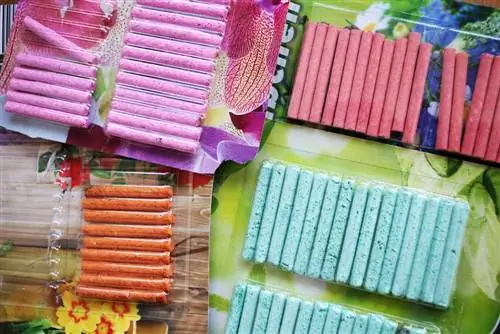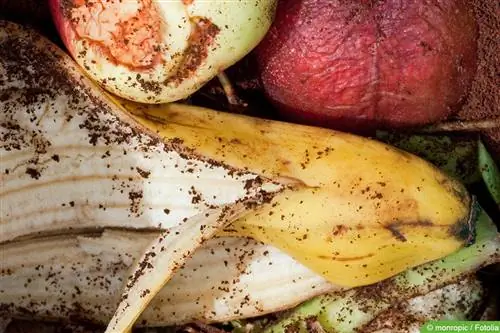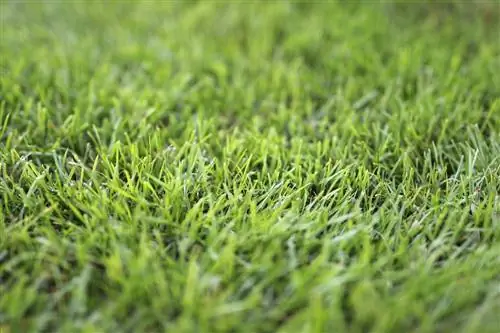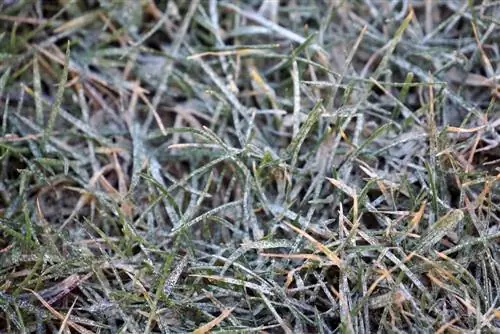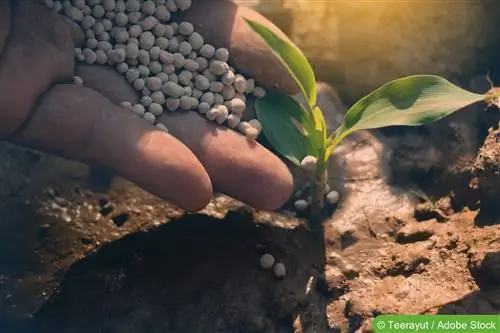- Author admin [email protected].
- Public 2023-12-17 03:39.
- Last modified 2025-06-01 06:48.
Space-saving, practical and easy to use - fertilizer sticks are also becoming increasingly popular among hobby gardeners. The small sticks contain the plant nutrients in optimal doses; The individual substances are released over a longer period of time, so that annoying re-fertilization is no longer necessary. However, there are many different fertilizer sticks on the market today; Only those who choose the right variety for their plants and use it correctly will benefit from all the advantages of the fertilizer.
Fertilizer sticks - ideal for potted plants
Basically, using fertilizer sticks is worthwhile for almost all plants. However, hobby gardeners in particular benefit from this special nutrient supply who have chosen the following locations for their plants:
- window sill
- Balcony
- Terrace
- Bucket keeping
The advantages of these plants are obvious: Due to the limited soil volume of the individual plant pots, dosing with a liquid fertilizer is often correspondingly more complex; The fertilizer sticks, however, can be optimally dosed. In addition, the annoying re-fertilization is no longer necessary.
Preliminary considerations
If you want to fertilize with sticks, you should carefully consider your individual usage requirements in order to achieve an optimal result. The first question that needs to be clarified is whether these are flowers or edible plants, for example herbs or tomatoes. If you just want to fill a balcony box with spring or summer flowers, you can use conventional, mineral fertilizer sticks for flowers.
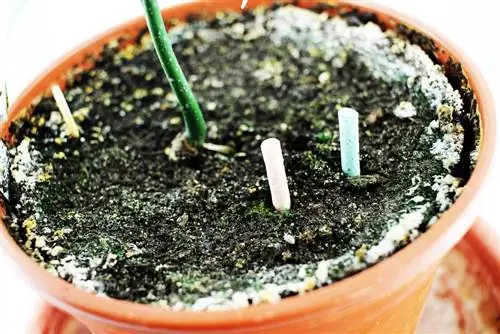
If the hobby gardener wants to harvest his own vegetables, preference should be given to organic fertilizers; Certain manufacturers offer fertilizer sticks specifically for these purposes. If you choose an organic fertilizer stick, the second step is to consider how the fertilizer must be composed; For example, a tomato requires many more nutrients than a chive plant. Therefore, various fertilizer sticks are available that have different compositions, for example for:
- Herbs (mostly low-eaters with an overall low nutrient requirement)
- Tomatoes, peppers, chillies (heavy eaters that require a high concentration of nutrients)
- Citrus fruits (special Mediterranean nutrient mix required)
Note:
No matter which fertilizer stick is ultimately used: fertilization must under no circumstances be carried out on very young plants!
Freshly planted plants are usually optimally supplied with nutrients for four to six weeks; If you use the fertilizer sticks too early, you risk oversupplying the plants, which can have damaging effects.
Application
If the hobby gardener has decided on a fertilizer stick and has waited for the young plant phase, the nutrient cocktail can be used. The application is very simple: The sticks are completely removed from their outer packaging and then inserted deep into the ground. The fertilizer should be placed in close proximity to the roots; Only in this way is the stick able to deliver the nutrients it contains in a targeted manner. If it is placed too far away from the roots, the nutrient cocktail loses some of its effectiveness.
The following aspects should be taken into account when using fertilizer sticks:
- Place sticks in the soil at a distance of 15cm
- do not insert more than 2 sticks per plant at the beginning of the season
- If fruit is forming, another stick can be added
Advantages of fertilizer sticks
Long-term effects of a balanced nutrient cocktail
Fertilizer sticks have all the advantages in terms of nutrient content that liquid fertilizers also offer; They activate the natural vigor of the plants, ensure lush flowers, bright colors and sustained fruit production. At the same time, the hobby gardener achieves increased plant resistance through the correct use of fertilizer sticks.
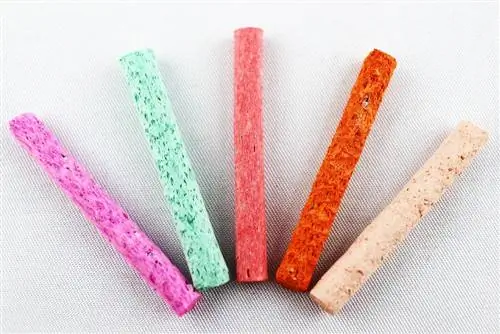
It contains the important substances phosphorus, nitrogen and potassium; While nitrogen is necessary for vigorous growth, phosphorus promotes the development of roots, flowers and fruits. Potassium is responsible for increased resistance of the plant. Depending on the type of fertilizer sticks, minerals and trace elements such as iron, sulfur and calcium are sometimes added.
However, compared to conventional liquid fertilizers, fertilizer sticks offer the advantage that they release the nutrient mix slowly and over a longer period of time; In this way, the hobby gardener saves time because there is no need for annoying re-fertilization. As a rule, the nutrients in the sticks are sufficient for a period of over three months.
No risk of overdose
Liquid fertilizers must always be measured precisely; This is usually complicated because the required quantities have to be measured with a measuring cup, for example. In addition, precise dosing is often not possible in this way, so there is a risk of overdosing.
The fertilizer stick, however, offers the following advantages:
- exact amount of nutrients contained in the stick
- no writing required
- No leftover fertilizer needs to be thrown away
Practical handling
Handling the fertilizer sticks is particularly easy and practical; The nutrient mix is extremely space-saving, as the sticks are usually only small in size and very compact. In this way, they take up much less space on the shelf than, for example, fertilizer bottles. The application is quick and easy; No special knowledge or dexterity is required.
Can be combined for different purposes
Fertilizer sticks are not only used for targeted nutrient supply; Rather, the addition of additional nutrients ensures further effects that benefit the plant. For example, fertilizer sticks can contain a fungicide that helps fight fungal diseases. It is also popular to combine the fertilizer with an insecticide, so that the treated plants are subsequently less susceptible to lice and other pests.
But no matter which product the hobby gardener chooses: with every fertilizer stick you achieve improved growth and more robust he alth of the plant. In this way, the hobby gardener will be able to enjoy his plants for a particularly long time - in a simple and comfortable way!

